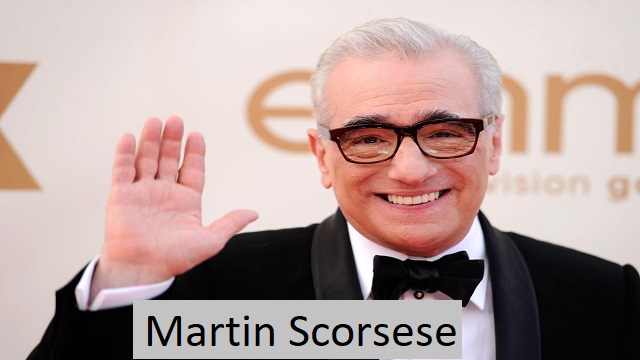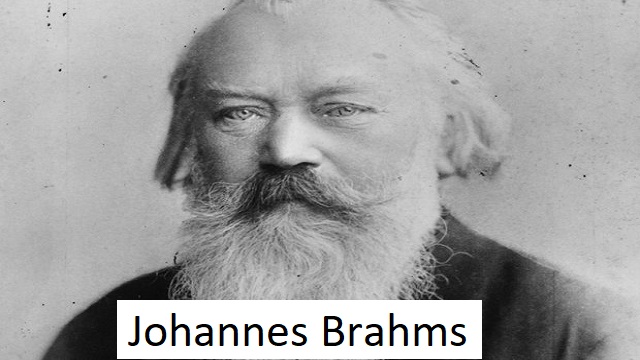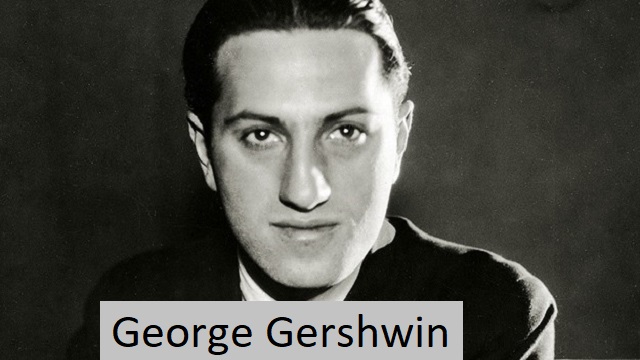Martin Scorsese, first name Martin Marcantonio Luciano Scorsese, (born on November 17, 1942 in Queens, New York, USA), an American filmmaker known for his bold and often violent depictions of American culture. From the 1970s, Scorsese created works that were extreme, bold and brilliant. But even his most famous films are in demand, sometimes poor films that have not achieved commercial success. Therefore, Scorsese carries the undeserved reputation as a cult director who works with big budgets and Hollywood’s favorite stars. In terms of art, he may be the most important American director of the late 20th and early 21st centuries.

Early life and work
Scorsese was an asthmatic child who grew up in the Italian-American neighborhood of Little Italy on Manhattan’s Lower East Side. His first interest in film returned when he tried to enter the Roman Catholic priesthood, and later obtained a degree (1964) and graduated (1966) in film at New York University, where he later taught. His student films showed a wide range of influences, from foreign classics to Hollywood music. Among them are short stories like what is a pretty girl like you doing in a place like this? (1963) and You’re Not Alone, Murray! (1964). Scorsese’s first feature film, Knocking at My Door (1967), is an intimate depiction of life on the streets of Little Italy. Harvey Keitel (who went on to make five more films with Scorsese in the 1970s and 1980s) played Scorsese’s alter ego, a street Catholic and has a strong Italian-American Catholic feel due to the fact that he sleeps with his girlfriend (Zina Bethune). The film received Scorsese’s review, and he was assigned the role of assistant director and supervising editor on Woodstock (1970), which resulted in the conversion of more than 100 hours of footage from the 1969 rock concert to 3 films of won. Academy Award for Best Documentary.
Scorsese made an underrated documentary about the Vietnam War protests, Street Scenes (1970), and later worked as an editor on the horror films Ball Caravan (1971) and Elvis on Tour (1972). Producer Roger Corman invited him to direct Boxcar Bertha (1972). Scorsese took the opportunity to entertain but ultimately fail about train robbers (Barbara Hershey, David Carradine and Bernie Casey) wreaking havoc in the Depression-era South. More important is The Road That Appears on the Ground (1973), Scorsese’s adaptation of a theme from The One Who Knocks at My Door. Filled with violent sequences, fast-paced dialogues, and ear-splitting rock music, the film is an example of his early work and his fine detailing and creative presentation. Keitel stars as an Italian small group collector, guilt-ridden over his epileptic girlfriend Teresa (Amy Robinson) and frustrated by his inability to control his troubled friend. (and Teresa’s cousin) Johnny Boy (Robert De Niro) , who made eight films with Scorsese between 1973 and 1995). Keitel and De Niro’s exciting and funny performances are the reason to turn on this big budget as Scorsese’s atmosphere, shocking language, violence and visual camera . After making the Italianamerican documentary (1974) about his parents, Scorsese went to work on his first feature film, Tamer Alice Doesn’t Live Here Anymore (1974), which had a bit of the pyrotechnic effect of Mean Streets. But in an understated way, Alice Doesn’t Live Here Anymore is an effective drama about a widow, Alice (Ellen Burstyn), who leaves New Mexico for California after the death of her abusive husband to start a new life. new. and his teenage son (Alfred Lutter). Burstyn’s Best Actress Oscar helped convince the Hollywood industry that Scorsese could discipline her talent.
Proving that he could make a conventional film, Scorsese followed the audience with Taxi Driver (1976), a hellish journey into the extraordinary madness of a Vietnam War veteran. damage. Written brilliantly by Paul Schrader, drawn by Michael Chapman and directed by Bernard Herrmann (his new film), this unsettling work is as fascinating as it is terrifying. De Niro gave what was considered his role as the dangerously detached but harmless Travis Bickle, and Keitel breathed a sigh of relief in the small important role of Sport’s pimp, a caretaker 12-year-old Iris (Jodie Foster). , and slavery. Perhaps the most controversial and controversial Oscar nominee to date, Taxi Driver was nominated for Oscars for De Niro, Foster and Herrmann. Scorsese threw himself into a small but telling cameo as a murderous, jealous husband, and the film was awarded the Palme d’Or at the Cannes Film Festival. Many consider it to be Scorsese’s best work.
Scorsese’s horror films were legitimate, but his status as Hollywood’s baby boomer lasted only until the release of New York, New York (1977), an adaptation of the 1970’s Hollywood horror. and elaborate decorations. Deliberately evoking previous screen successes of Vincente Minnelli and George Cukor, it stars De Niro as the enthusiastic Jimmy Doyle, a rookie saxophonist who works in a big band behind the scenes. singer Francine Evans (Liza Minnell). Their passionate love proves to be impossible to sustain, the proud and self-destructive Jimmy walks away from domestic bliss and Francine is pregnant. De Niro agrees that the role is not sympathetic, and Minnelli takes his mother (Judy Garland) out of power. Although critical opinion was mixed, it was a commercial flop. However, the film eventually developed a cult following in large part due to its obvious appeal to old Hollywood.
Stung by this rejection, Scorsese edited his footage from the Band’s November 1976 concert into the well-received rockumentary The Last Waltz (1978), featuring footage of Bob Dylan’s performance. , Joni Mitchell, Van Morrison, Muddy Waters, Eric Clapton and never before. other fireworks. It was followed by American Boy: A Profile of Steven Prince (1978), in which Prince, a friend of Scorsese, recounted his life as a road manager for singer Neil Diamond and as a heroin addict.
Movies of the 80s: Raging Bull, Lord of Comedy, The Color of Money
Scorsese produced the brutal but beautiful Raging Bull (1980). Freely adapted by Schrader and Mardick Martin from the memoir of former middleweight boxing champion Jake LaMotta, this poignant essay on the pain of violence is carefully crafted with Michael Chapman’s masterful black-and-white photography. that it was remade. Joe Pesci as Joey, Jake’s devoted brother, and Cathy Moriarty as Vicky, Jake’s abusive wife, were especially good. But what holds this cutthroat psychodrama together is De Niro’s remarkable performance as the self-destructive Academy Award winner La Motta, a proud but foolish man who is being torn apart by forces he cannot understand or control. Raging Bull went on to become one of Scorsese’s best films.
In The King of Comedy (1982), De Niro gave another wholly original performance. This time it’s TV stand-up his comedian Robert Popkin. Unaware of his profound lack of talent, Rupert unsuccessfully rehearses his pathetic comedy routines. He ends up kidnapping late-night TV star Jerry Langford (Jerry Lewis) in exchange for a 10-minute appearance on his show. Although the film failed at the box office, it later received critical acclaim. After Hours (1985) was a minor but entertaining romp in which Griffin Dunne appears as a kindly office worker on a long, strange night, threatened by all sorts of crazy people. Shot on location by cinematographer Michael Ballhaus, it’s a thrilling and unconventional illustration of what a Scorsese film can look like when its sole mission is fun.
The Color of Money (1986) was an adaptation of Walter Twiss’s sequel to his earlier novel The Hustler (film 1959, 1961). “Fast Eddie” Felson (Paul Newman, Oscar-nominated role) is now out of contention. He sees the natural talent of Vincent Loria (Tom Cruise), a wild and tumbling shark, and takes him under his wing to share his hard-earned gaming knowledge. However, they break up and eventually face each other in a tournament in Atlantic City. This was Scorsese’s most commercial and traditional film. But Hollywood has reminded us that Scorsese can at least deliver a modest batting average.
The Last Temptation of Christ (1988), despite some protests from conservative Christians before its publication, was a well-received version of Nikos Kazantzakis’ epic novel (adapted from Schroeder), in which Jesus It was about uncertainty in carrying out a mission. . Willem Dafoe was well cast as Jesus, but some critics took issue with the more unusual castings of Keitel as Judas, Hershey as Mary Magdalene, and Harry Dean Stanton as Paul. Ballhaus’ evocative cinematography and Peter Gabriel’s neo-traditional music bring this interpretation of the gospel to life, and it earned Scorsese his second Oscar nomination. Based loosely on Fyodor Dostoevsky’s Igrok (The Gambler), Scorsese’s vivid “Life Lessons” was part of the New York Stories (1989) trilogy (also a short story by Woody Allen and Francis Ford Coppola). It contains). Nick Nolte plays the painter’s bearish middle-aged slob who is desperate to keep his protégé mistress (Rosanna Arquette) from moving on. Movies of the 1990s: GoodFellas, Cape Fear, Casino
There was a different kind of New York story on which the famous GoodFellas (1990) was based – the story that helped shape Scorsese’s reputation. Adapted from Nicholas Pilegge’s non-fiction book Wise Guys, this clever portrayal of the life and crimes of Brooklyn gangster Henry Hill (written by Pileggi and Scorsese) is just like every Scorsese film since Raging Bull. It was so real. Ray Liotta played Hill, while Paul Sorvino, Joe Pesci, Lauryn Bracco and De Niro excelled in supporting roles, most notably Pesci, who won an Oscar for portraying Hill’s short-lived friend Tommy DeVito. Scorsese demonstrates his mastery of the medium in new and unexpected ways. It’s most notable in the well-researched tracking shot that follows Hill through a busy restaurant. Scorsese was once again nominated for an Academy Award for Best Original Screenplay, alongside the director and Pileggi.
The commercially successful Cape Fear (1991) was a very violent remake of the tense 1962 film. Noel played Sam Bowden, a Southern lawyer whose family terrorizes Max Cady (De Niro), who blames the lawyer for his prison sentence and seeks revenge. Screenwriter Wesley Strick’s script complicates the premise by making Bowden culpable on multiple levels, from framing Cuddy 14 years earlier to his current betrayal of his wife (Jessica Lange). The success of Cape Fear gave Scorsese a larger budget for his 1993 version of Edith Wharton’s novel The Age of Innocence. A romantically subtly creepy portrayal of upper-class New York in the late 19th century, the film follows an unfulfilled love affair between sensitive lawyer Nuland Archer (Daniel Day-Lewis) and Countess Ellen Olenska (Michelle Pfeiffer). Her brutal husband and general’s disrespect of tradition is a scandal that no proper society can tolerate. In a more subtle role, Winona Ryder starred as Archer’s seemingly shallow fiancé Mae. May understands more than she lets on. Scorsese displayed a very wide range of sensibilities in his smoothest cinematography yet. Some consider it too crude for such subtle historical themes and nuances. Scorsese and screenwriter Jay Cocks were nominated for an Academy Award for Best Adapted Screenplay.
In the 1970s, Morality Story Casino in Las Vegas (1995) reunited Scorsese with screenwriter Pileggi and actors De Niro and Pesci, marking the return of the GoodFellas talent pool, although the earlier film was a critically acclaimed success. Casino had an epic running time of just under three hours, and the De Niro-Passey pair had found little chemistry in GoodFellas. However, the film had excellent supporting actors (particularly from Sharon Stone, Alan King, James Woods, Don Rickles and Dickie Smothers). Kundun (1997) followed; It was a reverent and beautifully crafted biography of the 14th Dalai Lama, unfolding at a majestic pace and unfolding through the remarkable events of his life, beginning with the discovery of the Dalai Lama at the age of two, who Dalai was Lama’s former spirit and ended with his escape from Tibet in 1959.Movies of the 80s: Raging Bull, Lord of Comedy, The Color of Money
Scorsese produced the brutal but beautiful Raging Bull (1980). Freely adapted by Schrader and Mardick Martin from the memoir of former middleweight boxing champion Jake LaMotta, this poignant essay on the pain of violence is carefully crafted with Michael Chapman’s masterful black-and-white photography. that it was remade. Joe Pesci as Joey, Jake’s devoted brother, and Cathy Moriarty as Vicky, Jake’s abusive wife, were especially good. But what holds this cutthroat psychodrama together is De Niro’s remarkable performance as the self-destructive Academy Award winner La Motta, a proud but foolish man who is being torn apart by forces he cannot understand or control. Raging Bull went on to become one of Scorsese’s best films.
In The King of Comedy (1982), De Niro gave another wholly original performance. This time it’s TV stand-up his comedian Robert Popkin. Unaware of his profound lack of talent, Rupert unsuccessfully rehearses his pathetic comedy routines. He ends up kidnapping late-night TV star Jerry Langford (Jerry Lewis) in exchange for a 10-minute appearance on his show. Although the film failed at the box office, it later received critical acclaim. After Hours (1985) was a minor but entertaining romp in which Griffin Dunne appears as a kindly office worker on a long, strange night, threatened by all sorts of crazy people. Shot on location by cinematographer Michael Ballhaus, it’s a thrilling and unconventional illustration of what a Scorsese film can look like when its sole mission is fun.
The Color of Money (1986) was an adaptation of Walter Twiss’s sequel to his earlier novel The Hustler (film 1959, 1961). “Fast Eddie” Felson (Paul Newman, Oscar-nominated role) is now out of contention. He sees the natural talent of Vincent Loria (Tom Cruise), a wild and tumbling shark, and takes him under his wing to share his hard-earned gaming knowledge. However, they break up and eventually face each other in a tournament in Atlantic City. This was Scorsese’s most commercial and traditional film. But Hollywood has reminded us that Scorsese can at least deliver a modest batting average.
The Last Temptation of Christ (1988), despite some protests from conservative Christians before its publication, was a well-received version of Nikos Kazantzakis’ epic novel (adapted from Schroeder), in which Jesus It was about uncertainty in carrying out a mission. . Willem Dafoe was well cast as Jesus, but some critics took issue with the more unusual castings of Keitel as Judas, Hershey as Mary Magdalene, and Harry Dean Stanton as Paul. Ballhaus’ evocative cinematography and Peter Gabriel’s neo-traditional music bring this interpretation of the gospel to life, and it earned Scorsese his second Oscar nomination. Based loosely on Fyodor Dostoevsky’s Igrok (The Gambler), Scorsese’s vivid “Life Lessons” was part of the New York Stories (1989) trilogy (also a short story by Woody Allen and Francis Ford Coppola). It contains). Nick Nolte plays the painter’s bearish middle-aged slob who is desperate to keep his protégé mistress (Rosanna Arquette) from moving on. Movies of the 1990s: GoodFellas, Cape Fear, Casino
There was a different kind of New York story on which the famous GoodFellas (1990) was based – the story that helped shape Scorsese’s reputation. Adapted from Nicholas Pilegge’s non-fiction book Wise Guys, this clever portrayal of the life and crimes of Brooklyn gangster Henry Hill (written by Pileggi and Scorsese) is just like every Scorsese film since Raging Bull. It was so real. Ray Liotta played Hill, while Paul Sorvino, Joe Pesci, Lauryn Bracco and De Niro excelled in supporting roles, most notably Pesci, who won an Oscar for portraying Hill’s short-lived friend Tommy DeVito. Scorsese demonstrates his mastery of the medium in new and unexpected ways. It’s most notable in the well-researched tracking shot that follows Hill through a busy restaurant. Scorsese was once again nominated for an Academy Award for Best Original Screenplay, alongside the director and Pileggi.
The commercially successful Cape Fear (1991) was a very violent remake of the tense 1962 film. Noel played Sam Bowden, a Southern lawyer whose family terrorizes Max Cady (De Niro), who blames the lawyer for his prison sentence and seeks revenge. Screenwriter Wesley Strick’s script complicates the premise by making Bowden culpable on multiple levels, from framing Cuddy 14 years earlier to his current betrayal of his wife (Jessica Lange). The success of Cape Fear gave Scorsese a larger budget for his 1993 version of Edith Wharton’s novel The Age of Innocence. A romantically subtly creepy portrayal of upper-class New York in the late 19th century, the film follows an unfulfilled love affair between sensitive lawyer Nuland Archer (Daniel Day-Lewis) and Countess Ellen Olenska (Michelle Pfeiffer). Her brutal husband and general’s disrespect of tradition is a scandal that no proper society can tolerate. In a more subtle role, Winona Ryder starred as Archer’s seemingly shallow fiancé Mae. May understands more than she lets on. Scorsese displayed a very wide range of sensibilities in his smoothest cinematography yet. Some consider it too crude for such subtle historical themes and nuances. Scorsese and screenwriter Jay Cocks were nominated for an Academy Award for Best Adapted Screenplay.
In the 1970s, Morality Story Casino in Las Vegas (1995) reunited Scorsese with screenwriter Pileggi and actors De Niro and Pesci, marking the return of the GoodFellas talent pool, although the earlier film was a critically acclaimed success. Casino had an epic running time of just under three hours, and the De Niro-Passey pair had found little chemistry in GoodFellas. However, the film had excellent supporting actors (particularly from Sharon Stone, Alan King, James Woods, Don Rickles and Dickie Smothers). Kundun (1997) followed; It was a reverent and beautifully crafted biography of the 14th Dalai Lama, unfolding at a majestic pace and unfolding through the remarkable events of his life, beginning with the discovery of the Dalai Lama at the age of two, who Dalai was Lama’s former spirit and ended with his escape from Tibet in 1959.






